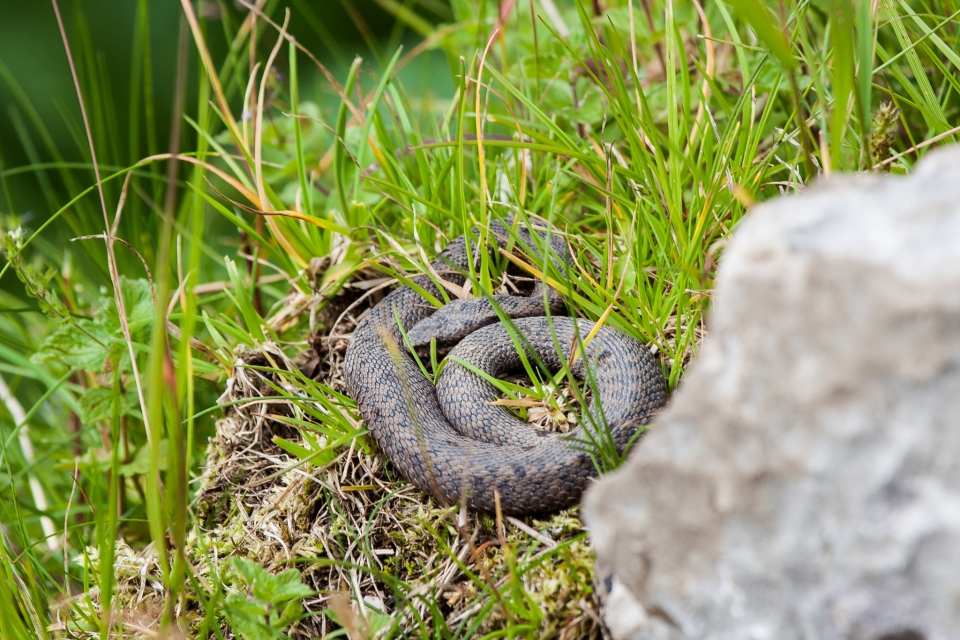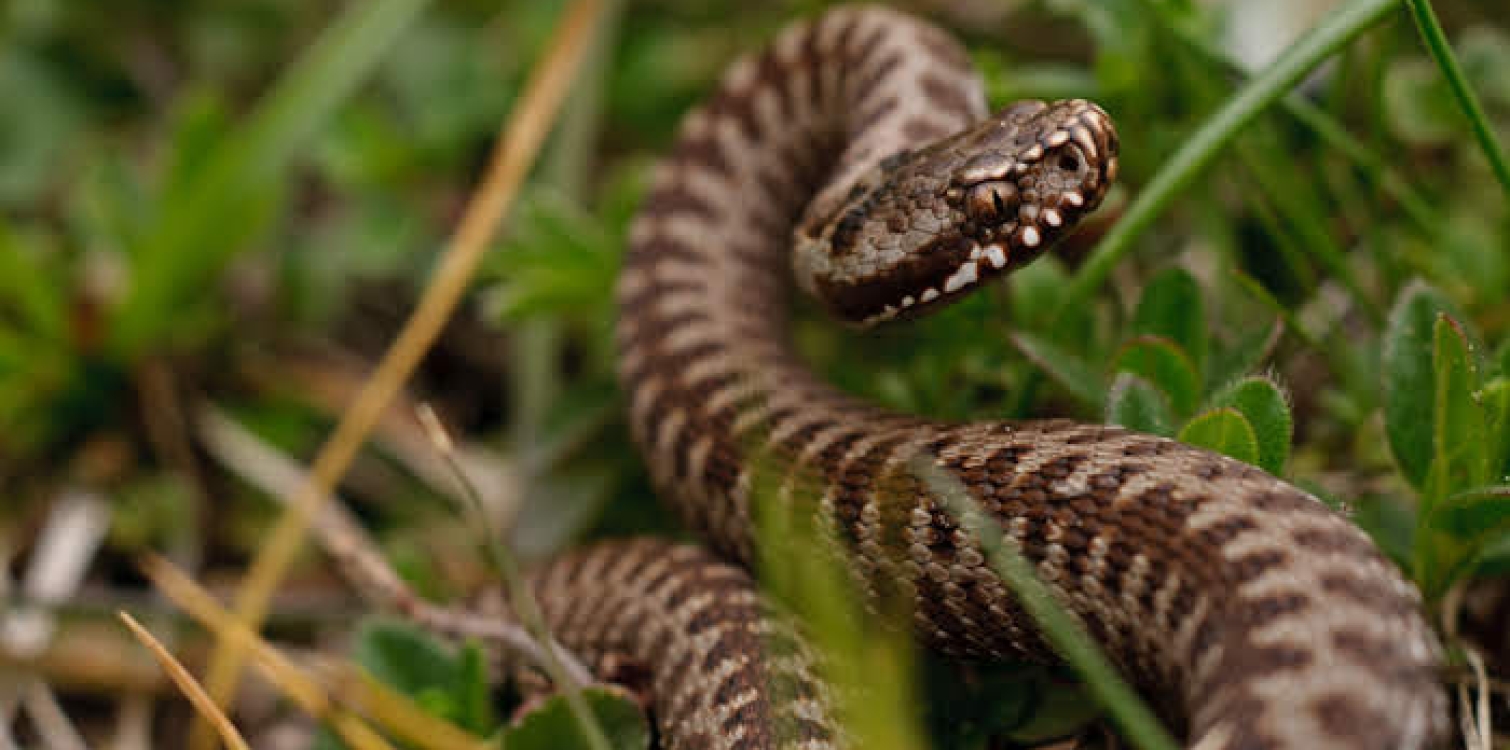
Common European adder (Vipera berus)
| Size |
|
| Weight |
|
| Diet |
|
| Habitat |
|
| Kingdom |
|
| Phylum |
|
| Class |
|
| Order |
|
| Family |
|
| Genus |
|
| Species |
|
Common European adder is the second largest venomous snake in Slovenia. It has a stout body with a zigzag pattern on its back.
It has a dark X- or V-shaped patch on the head and a zigzag stripe on the back, which is more pronounced in males. Males are typically grayish, while females are more brown. However, completely black individuals of this species are also commonly found.
Common European adder grows up to 70 centimeters in length, with larger specimens occasionally reaching 90 centimeters.
The adder' s eyes, with vertical pupils, resemble cat's eyes. The zigzag pattern runs along the entire back of the gray-brown venomous snake and can be continuous or broken. Its tail is short. The Common European adder can also be completely black—such individuals have a light line above their mouths.
The Common European adder lives in the higher, hilly areas of the Julian and Kamnik-Savinja Alps. It can be found in the Karavanke Mountains, the Trnovo Forest, the Javornik Hills and Snežnik. It lives in damp and cold areas where there are large temperature differences between day and night. It likes to stay in sunny spots on the edge of marshes and bogs, clearings, rocky meadows and mountain screes.
These reptiles feed on small mammals, birds and amphibians. They numb their prey with a bite and then swallow it whole.
When environmental temperatures drop, their life processes slow down. Common European adder, like other snakes, hides under rocks, in crevices, or buries itself in the ground or mud, entering a state of dormancy. In spring, when the surroundings warm up eough, the snakes become active again.
Snakes mate in spring. The male and female of the Common European addder intertwine and coil. The males also compete with each other, performing a 'viper dance'. The two rivals turn towards each other, raise the front of their bodies and try to knock each other down while swaying. The competition ends when one male gets tired. The two males never bite each other!
Common European adder is a viviparous species of snake. Late in summer or early autumn, the female gives birth to about 15 live juveniles.

Common European adder is generally timid and does not attack without reason. When threatened, it prefers to retreat to safety.
Do not hold, provoke, or kill the animal!
DO YOU KNOW?
- Snakes bite with their teeth and do not sting with their tongues! Extending their tongue is actually meant for sensing their surroundings.
- Venomous snake species are important because they help regulate the population of small rodents in the nature.
- Snakes do not have eyelids. Their eyes are protected by a transparent scale.

